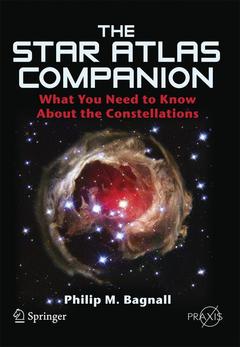Description
The Star Atlas Companion, 2012
What you need to know about the Constellations
Popular Astronomy Series
Author: Bagnall Philip M.
Language: English
Subject for The Star Atlas Companion:
486 p. · 16.8x24 cm · Paperback
Description
/li>Contents
/li>Biography
/li>Comment
/li>
Conventional star atlases are great for locating constellations and individual stars but The Star Atlas Companion goes one step further and describes the physical properties of more than 1,100 stars. With the aid of scale diagrams, the reader can get a real sense of the sizes, shapes, distances, and surface features of many of the stars visible to the naked eye in both the Nothern and Southern Hemispheres. Information on their rotational velocities and periods is given together with their spectral type and luminosity. Binary and multiple star systems are explained in detail. Special mention is made of Barnard's, Kapteyn's, Kepler's, and Van Maanen's Stars and the properties of many open clusters are given. With its emphasis on helping the amateur astronomer gain a better understanding of what they are looking at. The Star Atlas Companion will provide a new dimension to observing the star and is an invaluable supplement to any star atlas.
About this book.- Acknowledgments.- Introduction.- Making sense of the data.- The Constellations.- Andromeda to Chamaeleon.- Circinus to Indus.- Lacerta to Pisces.- Piscis Australis to Vulpecula.- Index.
These books may interest you

3-D Atlas of Stars and Galaxies 84.35 €



